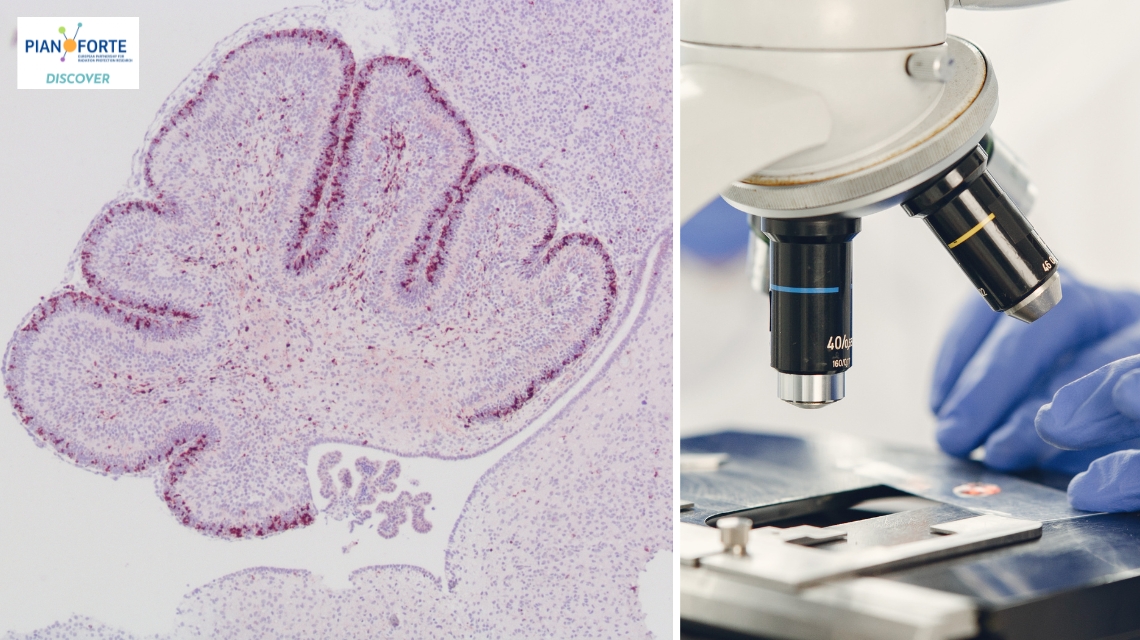Italian National Agency for New Technologies, Energy and Sustainable Economic Development

Health: ENEA coordinates 1.3 million project to study radiation-induced cancer
Furthering knowledge of mechanisms of radiation-induced cancer [1] is the goal of the project DISCOVER [2], funded by the EU with over 1.3 million euro and coordinated by ENEA in collaboration with Federal Office for Radiation Protection (Germany), National Centre for Public Health and Pharmacy (Hungary) and Oxford Brookes University (Great Britain).
Radiation tumor formation is classically attributed to unrepaired or mispaired DNA damage. But recent data also suggest a contribution of the cellular microenvironment, challenging the conventional radiobiology target theory.
“This project will use biological systems of varying complexity and highly innovative approaches [3] enabling the comprehension of how the different cell types that make up the cerebellum [4] react to moderate and low doses of radiation, contributing to tumor formation,” explained project coordinator Simonetta Pazzaglia, head of the ENEA Biotechnology RED Laboratory.
ENEA and its project partners, will seek to understand the mechanisms leading to cancer development with a particular focus on the role played by the cellular microenvironment, which includes, stromal cells[5], blood vessels, cytokines, and many other circulating molecules that can affect the behavior of tumor cells and, consequently, the process of cancer development.
“Therefore, direct DNA damage from radiation could be the origin of cancer, but interactions between cancer cells and their surrounding environment could also contribute to tumor development. Understanding these mechanisms could lead to new strategies for the prevention, diagnosis and treatment of radiation-induced cancer,” Pazzaglia concluded.
The DISCOVER project was funded under the first call of PIANOFORTE, a new European coalition for radiation protection research that aims to improve the protection of citizens and the environment from natural, occupational, and medical exposure to ionizing radiation. Coordinated by the French Institute for Radiation Protection and Nuclear Safety (IRSN), it comprises 58 partners from 22 European Union countries, the United Kingdom and Norway, and six EU radiation protection research platforms with a budget of 46 million euro, 65 percent of which is funded by the European Union's Euratom program and the rest by member states.
Notes
[1] Ionizing radiation is electromagnetic or corpuscular radiation endowed with sufficient energy to ionize the matter it passes through, basically to set in motion large numbers of electrically charged particles. The U.S. National Academy of Science estimates that 82 percent of the radiation to which each individual is exposed on average comes from natural sources like Radon gas. The remaining 18 percent, resulting from human activities, is mainly from medical procedures using X-rays, and only to a lesser extent from the use of consumer products, nuclear medicine, occupational reasons, or nuclear fallout/spills.
[2] DISCOVER - Dissecting radiation effects into the cerebellum microenvironment driving tumor promotion.
[3] Omics analyses (single cell transcriptomics, myrnome, proteome, and secretome), investigations of the EVs (extracellular vesicles), and epigenetic changes, in biological systems of different complexity (in vitro, ex vivo, and in vivo models).
[4] The cerebellum is a part of the brain involved in the control of voluntary movement, balance, and other cognitive processes.
[5] Stromal cells make up the supporting tissue, or stroma, of various organs and tissues. The stroma is not part of the functional cells of the organ (those that perform specific activities), it instead provides a supportive physical and nutritional environment.
